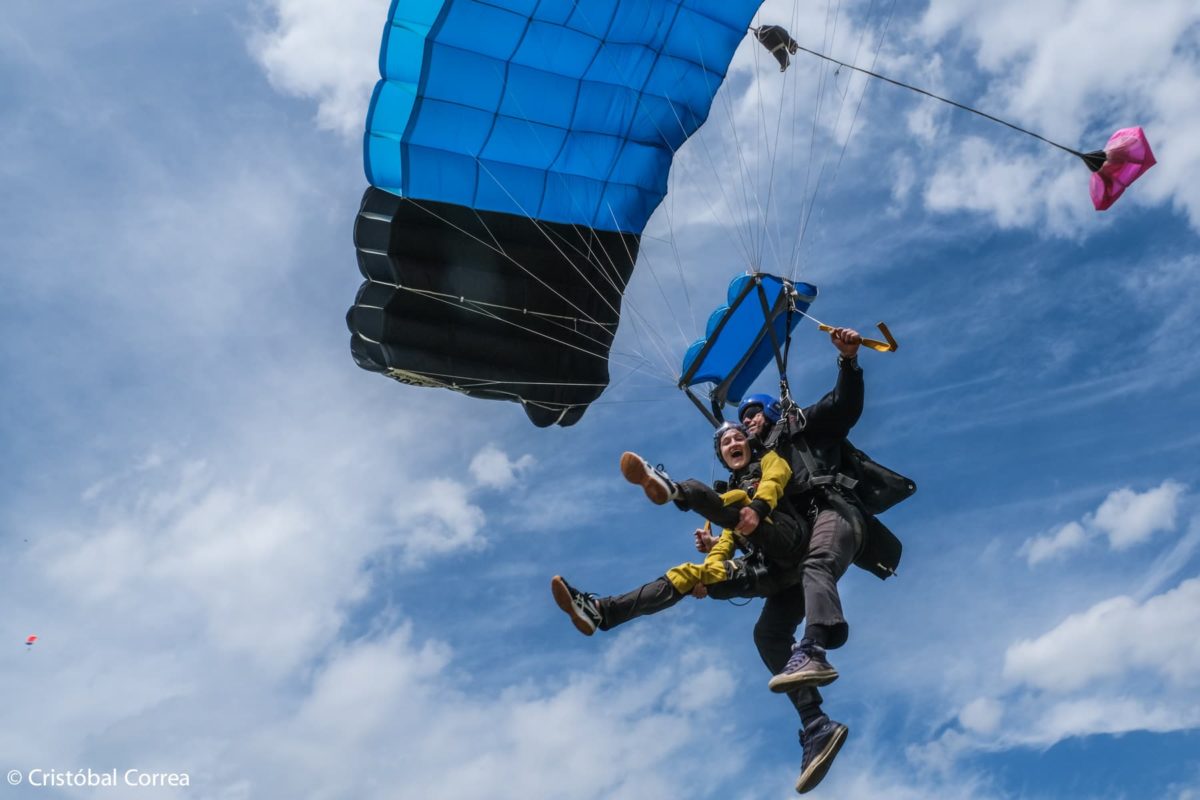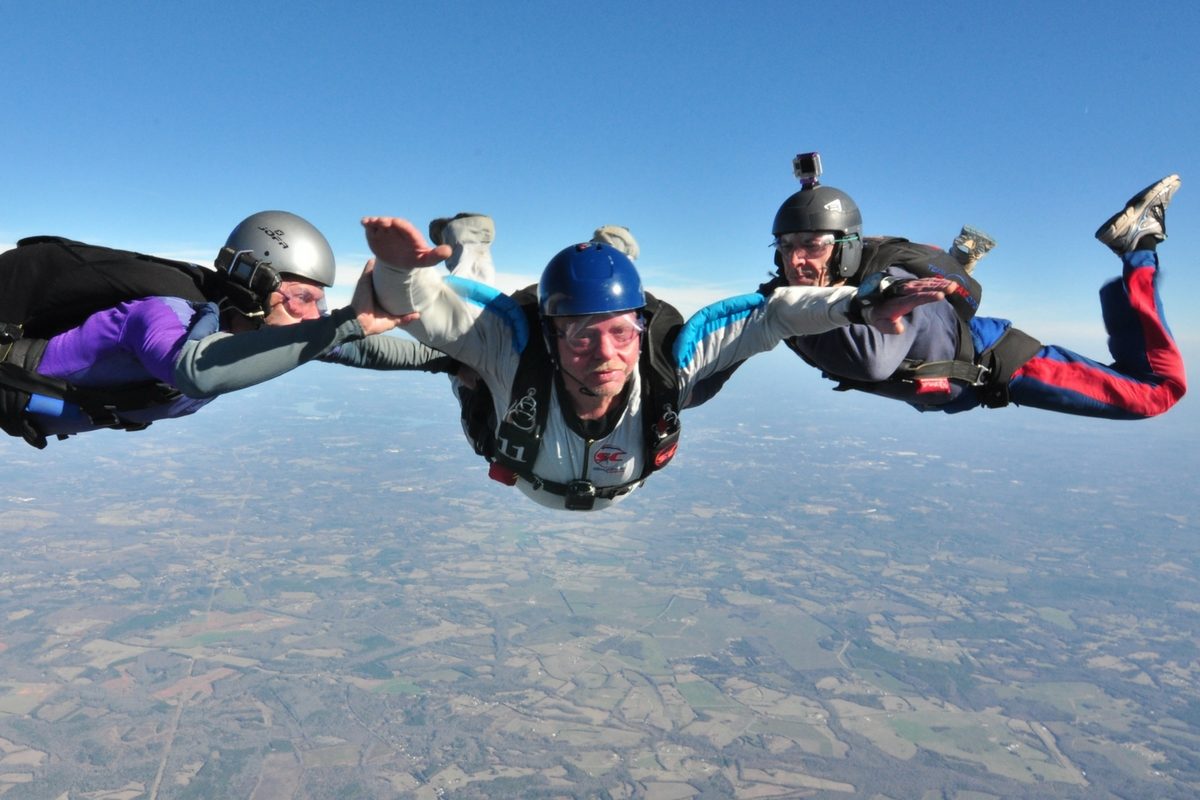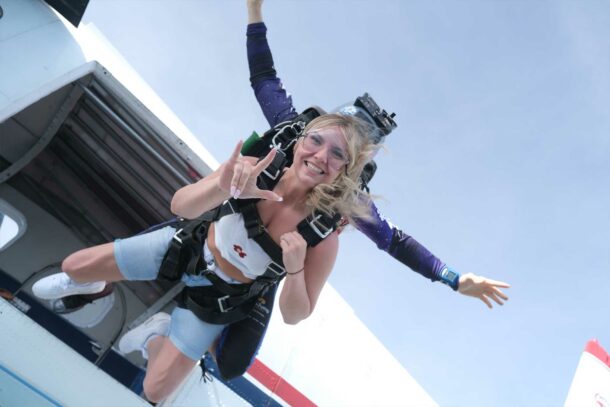7 Skydiving Safety Measures in Place You Should Know
Friday, June 9, 2023
Understanding Skydiving Safety Measures
If you’re about to make your first skydive, or even your 1,000th, skydiving safety is probably at the forefront of your mind. Before you sign the waiver, it’s important to really think about it – how dangerous is skydiving? What skydiving safety measures are in place to ensure the experience goes smoothly?
Skydiving has exponentially evolved over the last several decades, and today it’s safer than ever for everyone involved. So what makes skydiving less dangerous? Skydiving safety equipment is a big part of keeping jumpers safe. Ever-improving training techniques also help skydivers better understand how to stay safe while plummeting toward the earth. There are lots of techniques and pieces of technology that help keep skydivers safe while pushing the limits of what the human body is capable of. Let’s go over the top 7 safety measures in place that help mitigate the risk of jumping out of an airplane.

1. Gear Advancements
One of the most impactful advancements in safety that have happened in the sport of skydiving is gear improvement. The gear that skydivers jumped in the early days was often called “gutter gear,” and consisted of military surplus equipment. Some people would even chop the parachutes and harnesses up and rearrange them for better flight or fit! Today, main parachutes and containers are manufactured with performance and safety at the center of it all. Fit, flight, and functionality are the most important features of all current skydiving gear. The stuff we jump now is highly engineered and sophisticated.
Even reserve parachutes have progressed. Nowadays, reserve parachutes are the same shape as the main parachute, and they fly even more conservatively. Reserve parachutes are manufactured to open quickly, and consistently, and provide a safe and comfortable ride to the ground.
What’s more, it’s mandated that reserves must only be packed by FAA-certified riggers. That means that every single reserve parachute is packed by someone who was specifically trained to do the job. And that pack job is required to happen every 180 days, like clockwork – regardless of whether the reserve was deployed or not. Even if you ignore the rest of your gear maintenance, the regulations won’t let you overlook the safety of your last resort!
2. AAD (Automatic Activation Devices)
Speaking of gear, there’s one extremely special part of the parachute and container system that acts as a guardian angel. The Automatic Activation Device, or AAD, is a small computer that sits inside of the reserve parachute tray and does exactly what it sounds like it would. If a skydiver is moving too quickly through a predetermined altitude, the AAD will automatically deploy the reserve parachute. Pretty cool, right? We think so (and so do millions of our friends worldwide!).
That’s not to say that the AAD should be counted on as a regular deployment option. The Automatic Activation Device is the very last option in a worst-case scenario. But if a skydiver gets knocked out or has a medical emergency in freefall, this little doohickey will kick in and save them from a potentially devastating impact. It’s estimated that AADs have saved over 5,000 lives!

3. Tandem Instructor Requirements
The title of tandem instructor doesn’t come lightly. You can trust that the person who is taking you on your first skydive has earned the privilege to do so. It takes a lot of knowledge, dedication, and practice to be able to take someone else out of an airplane.
As mandated by the USPA (United States Parachute Association), tandem instructor requirements include:
- Logging at least 500 jumps
- Earning a USPA D license
- Accruing a minimum of 3 years experience in the sport
- Possessing a current FAA Class III Flight Medical Certificate
- Completing the USPA tandem instructor rating certification program
Thanks to these requirements, tandem skydiving is actually the safest way to make a skydive! And this just skims the surface. It doesn’t take into account the countless hours of studying, preparing, and jumping that it takes to achieve these markers. Or the heart and commitment that are needed to embody the values of what it means to be a skydiving instructor.
4. Student Programs
On the flip side, student programs are where the culture of safety begins. Teaching new skydivers how to be safe from their very first jump pays dividends when they become licensed jumpers down the road.
Instilling respect for the sport and a mind for safety in every aspect of our student program means that safety and skydiving will be synonymous with all of our jumpers. Detailed material, passionate instructors, and fair but rigorous testing allow our students to be confident in themselves and for us to be confident in their abilities. We take the safety and attitude of anyone who graduates from our student program very seriously so that they can have all the (safe) fun later!

5. Airplane Safety Protocols
Safety isn’t just about what the jumpers are doing in the sky. The ride to altitude is just as important.
Airplanes follow a very strict maintenance schedule that can only be completed by certified mechanics. There’s no running the jump plane down the road to let our uncle tinker with the engine! Every airplane is checked on a cycle of a set number of hours and maintained as needed between inspections. Even the inside of the airplane is designed for safety. Every skydiver knows and is expected to follow the rules around when to wear (and not wear) their seatbelt during the plane ride to altitude. Not only do seatbelts protect the wearer in case of an emergency, but they also ensure that everyone in the airplane is seated in the best possible configuration for safe weight and balance during flight.
And don’t forget, pilots are part of the airplane, too. The pilot isn’t just the driver of the taxi to the clouds. Your safety is in their hands as well. They are required to follow all rules about weather restrictions, air traffic, landing areas, and cloud clearance regulations. They’re almost as responsible for the safety of your jump as you and your instructor are! Pilots are even held to safety standards regarding what they can do in their time on the ground. There are restrictions around drinking alcohol, reckless driving, and other behaviors that could impact their ability to fly safely.
Your safety is in our hands and hearts before your skydive even starts.
6. The S&TA
Every dropzone is required to have a Safety & Training Advisor or an S&TA. This person’s main concern is the safety of the people, equipment, and procedures at the dropzone and they are responsible for making sure the safety rules are being followed. They will usually be present whenever skydiving is happening and will often be one of the most experienced skydivers or instructors on staff. The dropzone looks to the S&TA for guidance on all types of skydiving operations – student jumps, experienced skydivers, competitions, and large-scale events. They have the knowledge, experience, and disposition to do what’s right, even when it might not be the most popular thing to do, and we love them for it!
7. The USPA
Besides everything individual drop zones do to ensure the safety of their skydivers, the USPA sets out a series of rules and regulations that member dropzones must follow. The USPA is the governing body of skydiving in the United States, and it’s been around since 1946! It makes sense that they would know a thing or two about how to keep skydivers safe.
Ready to be wowed by safety in the sky? Let us show you what we’re capable of!
Related Article: Is Skydiving More Dangerous than Driving
Copyright © 2024, Skydive Carolina, All Rights Reserved.
DropZone Web Design & Marketing by Beyond Marketing, LLC





